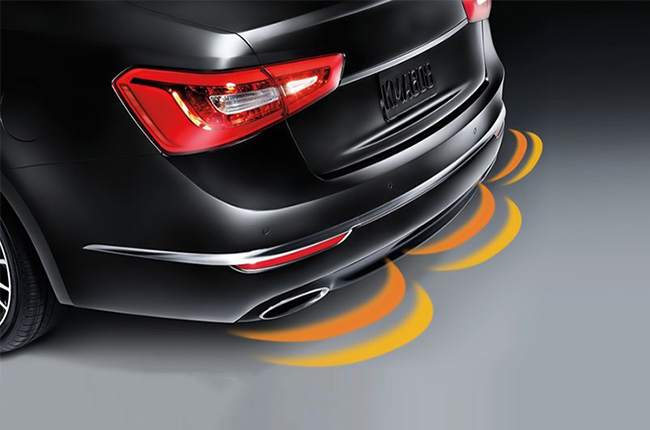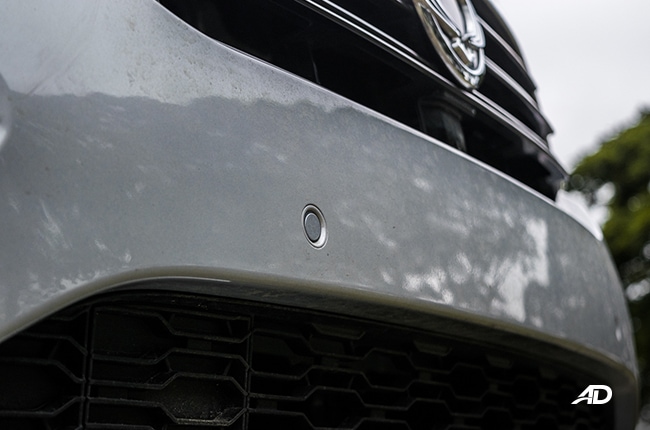
Parking a small car is easy while parking a larger vehicle is hard without assists. With the advent of touch screen infotainment system and backup cameras, reversing into a slot is not as nerve-racking as before.
However, more affordable cars usually get the short end of the stick when it comes to features. A backup camera may not even be included in the package, but for convenience’s sake parking, sensors in the rear should ideally be on the spec sheet because it’s added protection to your investment. More expensive cars will have a combination of parking sensors and a backup camera. If the manufacturer is fond of snazzy additions, front parking sensors will also be included.
How they work

Parking sensors work by bouncing a small ultrasonic wave off an obstacle. The sensor works as an emitter and as a receiver so it can relay information to a screen or a device that beeps intermittently depending on the distance from an obstacle.
These sensors also activate when you put your car into its reverse gear. An audible beep will play followed by several beeps that indicate how close you are. The intervals will get shorter and shorter the closer you get to the object you’re nearing.
The perfect pair

If we are talking about the best-case scenario in terms of parking sensors, you should ideally have a set of parking sensors coupled with a backup camera. This enables you to see and hear how close you are to an object because you may be paying attention to your side mirror, but neglect to notice a pole that your rear bumper is about to kiss.
If we are talking about the total package, you should have an all-around camera system and parking sensors both in the front and rear. At the very least, an ideal setup is a backup camera and a set of sensors. Less than ideal is a set of rear parking sensors. In this case, you should opt for at least four to cover all corners of the rear bumpers.
Some manufacturers that sell mainstream cars are already incorporating multiple parking sensors into the front and rear. Mazda and Nissan are among the few mainstream brands that have these features in their cars at the time of this article’s writing. More brands may continue to incorporate these systems into automobiles, which would make navigating the tight streets of Metro Manila, easier.
They have other uses
These devices don’t just help you get into a slot with ease, it can also notify you of potential hazards when backing out of a slot, also known as the Rear Cross Traffic Alert. The pillars in cars are getting thicker due to stricter safety standards, hampering visibility. Sensors are another way to increase a driver’s level of awareness because they can sense objects that are quite a way off.
Latest Features
-
An all-electric future: The Porsche Macan Electric / Featured Article
Porsche’s Macan goes all-electric; it’s a new beast with an electrified heart, yet unmistakably Porsche in performance and spirit.
-
Which Kia should I buy? / Featured Article
We’re here to help you decide which Kia vehicle is best for you, whether it’s a sedan, crossover, or minivan.
-
Why Lynk & Co is a good option for luxury car buyers / Featured Article
Lynk & Co offers premium value for those exploring the luxury market.
Popular Articles
-
Electric Vehicles in the Philippines for under P1 million
Jerome Tresvalles · Aug 19, 2025
-
Top 3 Cars For Every Lifestyle—What Cars Are Right For You? | Behind a Desk
Caco Tirona · Apr 24, 2024
-
5 Tips to Maximize Fuel Efficiency
Jerome Tresvalles · Sep 09, 2024
-
Five driving habits that are draining your fuel tank
Jerome Tresvalles · Jun 24, 2025
-
Can engine braking harm your engine?
Jerome Tresvalles · Sep 11, 2025
-
Do electric cars even need maintenance?
Jerome Tresvalles · Oct 23, 2024
-
Best vehicles for an active outdoor lifestyle
Shaynah Miranda · Jul 25, 2024
-
How to drive different types of vehicle transmissions
May 23, 2024
-
5 easy ways to keep your car interior clean
Allysa Mae Zulueta · Nov 15, 2021
-
How to survive Metro Manila traffic
Earl Lee · Aug 16, 2022




